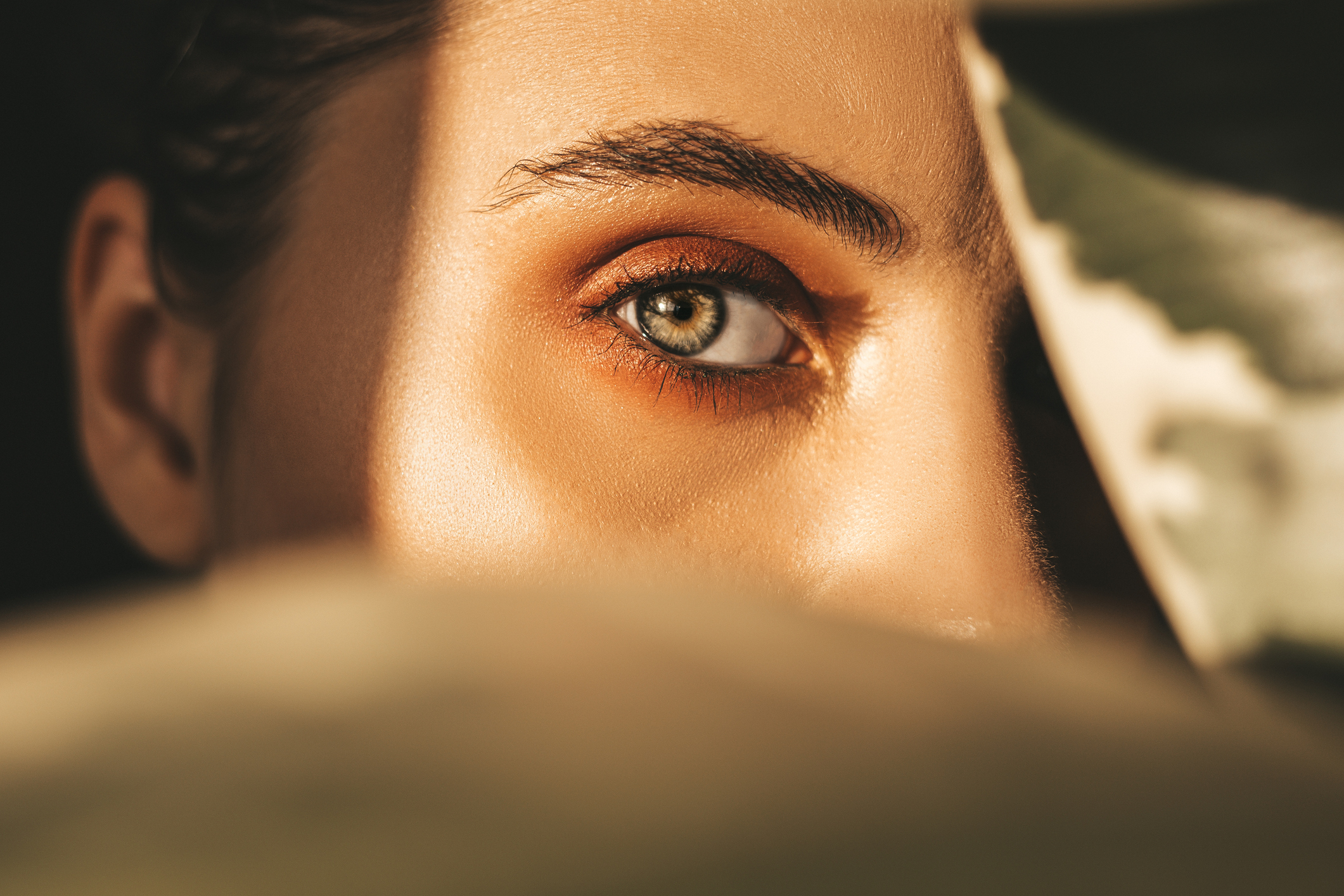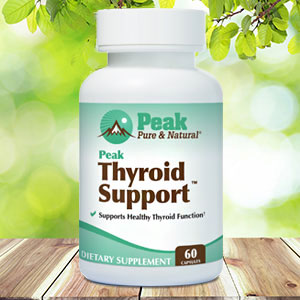Get Easy Health Digest™ in your inbox and don’t miss a thing when you subscribe today. Plus, get the free bonus report, Mother Nature’s Tips, Tricks and Remedies for Cholesterol, Blood Pressure & Blood Sugar as my way of saying welcome to the community!
Lutein and zeaxanthin: Protection far beyond your eyes

Lutein and zeaxanthin are a pair of carotenoids that have a range of health benefits but are best known for supporting eye health, and in particular, guarding against macular degeneration.
We owe much of what we know about the eye health benefits of these two phytochemicals to American scientist George Wald.
In 1967, Wald shared the Nobel Prize in Physiology with two other scientists for his discoveries concerning the physiological and chemical visual processes in the eye, and in particular, the macula, a portion of the retina that’s crucial to our functional vision.
Because of George Wald’s work, we know that lutein and zeaxanthin are the only dietary carotenoids that accumulate in the retina of the eye, and particularly in the macula, at the back of the eye.
Why is the macula so important? It’s the part of the retina that gives us the sharp, fine-detailed vision we need to do things like read, drive, recognize faces and see the world in color.
Lutein and zeaxanthin protect the macula
This ‘dynamic duo’ works to protect your macula in a few ways.
Lutein and zeaxanthin work as important antioxidants that protect your eyes from harmful free radicals that can end up stealing your vision.
Free radicals are unstable molecules that are constantly forming in the body. They’re a natural byproduct of aging, but also come from exposure to things like pesticides, cigarette smoke, car exhaust and chemical food additives.
The macula is especially susceptible to free radical damage because it consumes high levels of oxygen, which lead to the production of high levels of free radicals.
Lutein and zeaxanthin are the “clean-up team” that neutralizes free radicals before they can harm the macula (and other parts of the body). They also act as a sort of “natural sunscreen” protecting the eyes from blue light and UV light that increase risk of developing age-related macular degeneration (AMD) or a cataract.
But that’s not all…
in 1996, the Age-Related Eye Disease Study (AREDS) was launched. It was hailed as an amazing success after finding that a formulation of nutrients including lutein and zeaxanthin, vitamins C and E, copper and zinc, had the power to significantly slow dry AMD progression from moderate to late disease if taken daily. The AREDs formulation is recommended by ophthalmologists for adults at high risk of AMD.
Other ways lutein and zeaxanthin promote healthy eyes
The same antioxidant action that lets this pair of phytochemicals protect the macula from free radicals may also make it a preventive for other eye diseases, including:
- Cataracts. Research has shown that eating foods rich in lutein and zeaxanthin (more about those in a bit) could help slow the formation of cataracts, those cloudy patches in the front of the eye that become more common with age.
- Diabetic retinopathy. In animal studies, supplementing with lutein and zeaxanthin has been shown to reduce oxidative stress that damage the eyes when diabetes is present.
- Retinal detachment. Rats with retinal detachment who were given lutein injections had 54 percent less cell death than those injected with corn oil.
- Uveitis. Lutein and zeaxanthin may help reduce the inflammation of uveitis, an inflammatory condition in the middle layer of the eye.
Lutein and zeaxanthin’s benefits far beyond your eyes
Skin health. The antioxidant effects of lutein and zeaxanthin protect the skin against the sun’s damaging ultraviolet rays. Animal studies show that these two antioxidants may protect skin cells from premature aging and tumors caused by ultraviolet rays.
Artery and heart health. Lutein is an important part of the reason that a diet rich in dark leafy green vegetables may slow or prevent heart problems that occur when arteries get stiff from buildup. In the Los Angeles Atherosclerosis Study, people with higher blood levels of lutein averaged only a 0.004 mm increase in artery thickness over 18 months. In those with the lowest levels of lutein, artery wall thickness increased an average of 0.021 mm. They also found lutein lowered the inflammatory effects of LDL “bad” cholesterol on artery walls.
Stress busters. In recent years, we’ve found out that lutein and zeaxanthin are also connected to your brain health and the production of the stress hormone, cortisol.
Lutein and zeaxanthin are powerful anti-inflammatory agents that can deposit themselves directly into neural tissues, as they do in the eyes. But more recent research shows that this happens in the brain as well.
And when this duo settles into your brain, they have a direct influence on cortisol levels. They reduce the stress hormone and keep your body’s nervous system running at a more moderate level, rather than at a high-stress level.
Heading off dementia. Lutein and zeaxanthin are two of three antioxidants that can support brain health and may stave off cognitive decline.
In a study published by the American Academy of Neurology, over 7000 people aged 45 and older at the beginning of the study were followed for sixteen years. Those with the highest amounts of lutein and zeaxanthin were less likely to develop dementia decades later than people with lower levels of the antioxidant duo.
Every increase of one standard deviation in lutein and zeaxanthin levels was matched by a seven percent decrease in dementia risk.
But not only do these two antioxidants help guard eye health and support cognitive function, but studies have also demonstrated that maintaining optimal levels of lutein in the brain keeps you cognitively young and decreases the risk for osteoporosis.
Eating the right foods with lutein and zeaxanthin
The average American consumes, at most, 3mg of lutein and zeaxanthin per day. Twice that much, or 6mg per day, is related to controlling macular degeneration.
Moreover, when you consume very little of these antioxidants, your body puts them to work to reduce more urgent inflammatory and oxidative damage in the body, rather than sending them to the eyes to play a preventive role.
That’s why it’s so important to eat foods loaded with lutein and zeaxanthin.
Luckily, there are lots of those:
- Spinach
- Lettuce
- Kale
- Corn
- Egg yolks
- Turnip, collard, mustard and dandelion greens
- Avocados
- Mango
- Peas
- Pumpkin
- Brussels sprouts
- Honeydew
- Broccoli
- Asparagus
- Pistachios
- Carrots
One important note: lutein and zeaxanthin are degraded by heat. The higher the heat, the more nutrient content that’s lost.
Even pan-frying or stir-frying spinach or other greens for two minutes can deplete them of lutein and zeaxanthin.
So what’s the best way to consume these antioxidant-rich foods?
Consider adding them to a smoothie. But be sure to include a little fat to improve releasing the lutein, especially, from foods like spinach. A full-fat milk or coconut milk will release more lutein than plant-based milk or water.
And if you want to up your game, you can reach for supplements containing lutein and zeaxanthin. While there’s no upper limit set for these nutrients, the American Optometric Association says that 10mg per day of lutein and 2mg per day of zeaxanthin are about what you need to support your eye health.
Editor’s note: Did you know that when you take your body from acid to alkaline you can boost your energy, lose weight, soothe digestion, avoid illness and achieve wellness? Click here to discover The Alkaline Secret to Ultimate Vitality and revive your life today!
Sources:
The Role of Free Radicals and Antioxidants in Macular Degeneration —Enhanced Vision
One more reason to eat lots of fruits and vegetables: Lutein — USC News
Dietary lutein/zeaxanthin partially reduces photoaging and photocarcinogenesis in chronically UVB-irradiated Skh-1 hairless mice — Skin Pharmacology and Physiology
Carotenoids: Everything You Need to Know — Healthline














